Starting the day
Most days begin with waking up, washing up, and getting dressed. The following images capture some of the words involved in these activities.
La chambre à coucher

La salle de bains

Le placard et les vêtements

© 2015, Greg Lessard
In some respects, learning the everyday words of French is harder than learning more learned vocabulary. As we have seen, because English borrowed many French words for cultural phenomena, and because French and English both make heavy use of Latin and Greek roots, the ratio of cognates in learned language is actually quite high. However, when it comes to everyday language, English has kept many of its old Germanic forms, while French has kept its forms, often inherited from Latin, but often much modified, so differences are more numerous.
Unfortunately, this means that for learning everyday French, it is necessary to identify and memorize new words. On the other hand, since much of everyday language has to do with things that can be seen, it is possible to attach words to pictures. This is the approach used in this module. We will follow a path through everyday experiences for someone living in a francophone environment. At each step of the way, you will see pictures. When you mouse over them, the names of a number of basic objects will appear in bubbles over the image. Try to memorize these words, including their gender, usually indicated by the preceding article (un vs une or le vs la). At the end of each module, you will see a quiz based on flashcards. Take the quiz until you feel comfortable that you know the basic words you have just seen.
Most days begin with waking up, washing up, and getting dressed. The following images capture some of the words involved in these activities.



The following quiz will help you ensure that you remember the words you have just seen. Take it more than once to ensure that you remember the words you have seen.
It is said that breakfast is the most important meal of the day. This important meal is sometimes called le petit déjeuner and sometimes simply le déjeuner. The following image shows some of the typical foods found in a breakfast. Mouse over the images to see the words. Try to imagine tasting these foods; it will help to anchor the words in your memory.
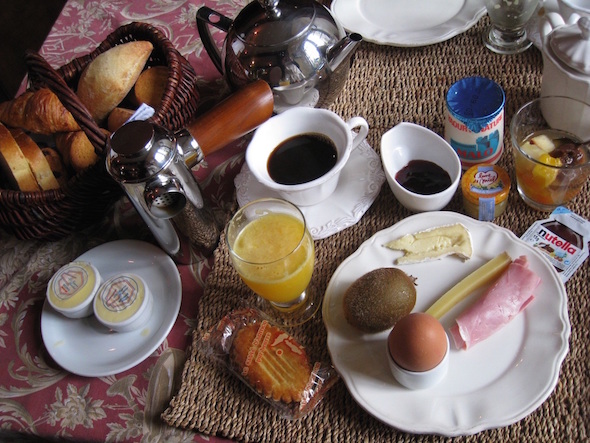
To get around in a typical day, we may use several means of transport. Here are some of them. As before, mouse over the images and try to memorize the words you see.
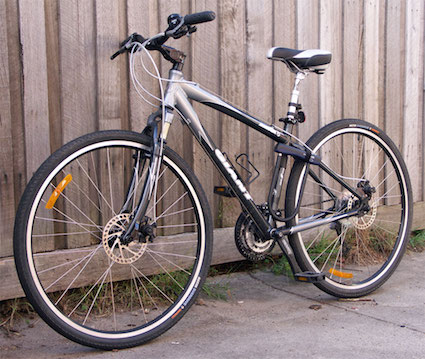



The following quiz will help you ensure that you remember the words you have just seen.
After rising, dressing, breakfast and travel comes work. Many people work in an office environment. The following images show some of the things to be seen in such a workplace.


The following quiz will help you ensure that you remember the words you have just seen. Take it more than once.
After a hard morning's work, one begins to think of food. The following image shows a lunch setting. Mouse over the image to learn some of the words.
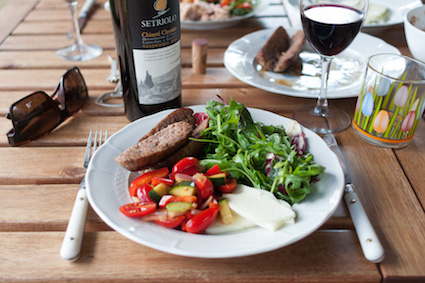
And then back to work...
After a long day's work, it's time to think about groceries. First, some bread. (In fact, this is best purchased in the morning, when the selection is better, but we will pretend there's still a lot now...) In French culture, bread is important and there are many labels for different kinds. The image below simplifies this diversity.
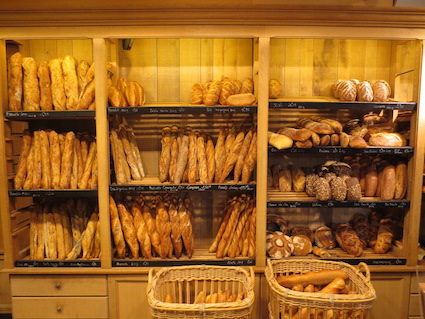
And then some vegetables:
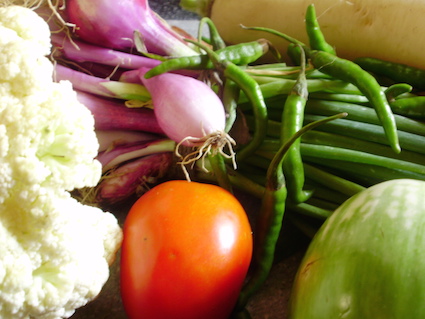
And some more:
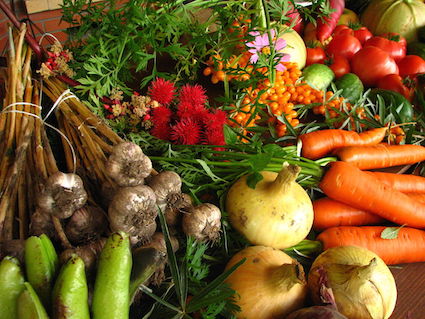
Then home to la cuisine:
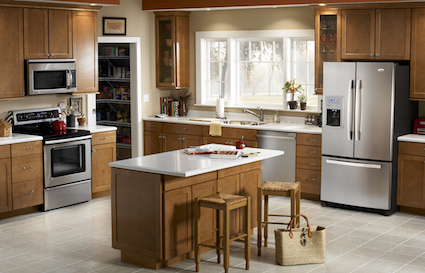
And we'll need some implements:

And then for a relaxing evening...
The following quiz will help you ensure that you remember the words you have just seen. Take it more than once.
We have spent some time familiarizing ourselves with the world of work and the world of food. Here are two texts based on those two areas. Don't forget to use the scaffolding we saw earlier:
In both cases, only the beginning of the text is included here, but there's a link to the rest in each case. This is the beginning of your autonomy as a reader, when you adventure out into the world of texts in French.
A story from the world of work (Source: ManuVie)
Une journée de travail bien remplie
Saviez-vous que les employés des huit centres d’information de la Division canadienne traitent 28 000 communications par jour? Chaque client qui communique avec nous a sa propre histoire à raconter, et bien souvent, les représentants des centres de service à la clientèle finissent par faire partie de cette histoire.
L’intrigue est digne d’un roman de Dickens, mais ne relève aucunement de la fiction. C’est l’histoire vécue d’une cliente. Noël approche, elle est à bout de ressources et, en désespoir de cause, elle appelle le Centre de service à la clientèle de l’Assurance collective, à Waterloo.
Au risque de révéler le dénouement de l’histoire avant de vous l’avoir racontée, je vous dirai juste que notre cliente a obtenu l’aide dont elle avait cruellement besoin.
Elle est très reconnaissante envers Manuvie, et plus particulièrement envers Jaclyn Thomas, représentante du Service à la clientèle, qui a vite compris qu’elle devait trouver un moyen de l’aider.
« C’était juste avant Noël, l’année dernière, et je me sentais particulièrement bien parce que j’avais bouclé tous mes achats des fêtes la veille, se rappelle Jaclyn. Jusqu’à ce que je reçoive cet appel d’une participante. Je ne pouvais pas la laisser tomber, et je devais faire vite. »
The story continues here
TranslationA very full day of work
Did you know that the employees of the eight call centres in the Canadian division deal with 28,000 communications each day? Each client who communicates with us has his or her own story to tell, and very often, the representatives in customer services end up by becoming part of the story.
This story is like one out of a Dickens novel, but it's not fiction. It's the real live story of a customer. Christmas is approaching, she is out of money, and in desperation she calls the customer service centre of Collective Insurance, in Waterloo.
Without telling you the end of the story ahead of time, I will just say that our customer got the help she needed so badly.
She is very grateful to ManuVie and especially to Jaclyn Thomas, a customer service representative, who quickly understood that she needed to find a way to help.
"It was just before Christmas, last year, and I was feeling particularly pleased because I had bought all my Christmas gifts the day before," remembers Jaclyn. "Until I got a call from a customer. I couldn't let her down, but I had to work fast."Advice on cooking (Source: Bernard Lavallée: Le nutritionniste urbain)
10 conseils simples de 12 nutritionnistes pour bien manger
J’ai demandé à mes collègues nutritionnistes de me donner leurs conseils les plus simples pour bien manger. Ces conseils se résument en 10 points. Si vous suivez au moins un de ces conseils, vous aurez une alimentation plus équilibrée et une relation avec les aliments beaucoup moins stressante. Nul besoin de tous les suivre. Commencez par un. Quand c’est intégré, passez à un autre.
1) Consommer des aliments le moins transformé possible« Pensez simple afin de manger des aliments simples, non raffinés et manger vrai. » – Elisabeth Cerqueira, nutritionniste et présidente de Nutrisimple
« Si vous achetez des aliments emballés dans du carton ou du plastique, oubliez les tactiques de marketing sur l’emballage et allez directement consulter la liste des ingrédients. Plus elle est courte, mieux vous vous porterez. » – Hélène Laurendeau, nutritionniste et animatrice
2) Cuisiner
« C’est bien entendu un geste d’amour et de partage. C’est rassembleur. Mais cuisiner, c’est aussi comme prendre l’avion, ça ouvre nos horizons et ça nous procure un sentiment de liberté. La liberté de choisir de meilleurs ingrédients, d’enrichir nos recettes. La liberté d’apprivoiser à son rythme des ingrédients nouveaux. Cuisiner, c’est prendre en main notre alimentation. En cuisinant, on devient moins dépendant des produits transformés. Notre alimentation se simplifie. Les produits frais prennent plus de place. Notre facture d’épicerie fond. Ça sent bon dans la maison. Nos enfants nous voient aller. On crée de bons souvenirs. Sans parler du sentiment d’accomplissement lorsqu’on réalise qu’on l’a fait soi-même et que c’est bon! » – Geneviève O’Gleman, nutritionniste, auteure, animatrice et productrice
To see the rest of the advice, look here.
Translation10 simple pieces of advice from 12 nutritionists to eat well
I asked my fellow nutritionists to give me their simplest advice for eating well. These suggestions can be simplified into 10 points. If you follow at least one of these pieces of advice, you will have a more balanced diet and a much less stressful relationship with food. It's not necessary to follow all of them. Start with one. When you've made it part of your routine, go on to the next.
1) Consume the least processed foods
"Think simple in order to eat simple unrefined foods, and eat true." - Elisabeth Cerqueira, nutritionist and president of Nutrisimple
"If you buy food wrapped in cardboard or plastic, ignore the marketing strategies on the label and go straight to the list of ingredients. The shorter it is, the healthier you will be." - Hélène Laurendeau, nutritionist and television presenter
2) Cooking
"Cooking is a gesture of love and sharing. It brings people together. But cooking is also like taking the plane, it opens horizons and gives us a sense of liberty. The liberty to choose better ingredients, to enrich our recipes. The liberty to include new ingredients in our rhythm. Cooking is taking control of our food. By cooking, we become less dependent on transformed products. Our eating becomes simpler. Fresh products become more important. Our grocery bills shrink. The house smells good. Our children watch what we're doing. We create good memories. On top of that, there's the sense of accomplishment that we've done something ourselves and that it's good!" – Geneviève O’Gleman, nutritionist, author, television presenter and producer
You should now feel comfortable with some of the vocabulary of daily life. Remember, this is only a small start. In our first language, we know thousands of words for many objects and their parts. Try to use this module as a springboard to read whatever you can in French 'out in the world' and to attach words to things.
Over the course of the module, you might have noticed that some words are made up of simpler words combined, as in un tire-bouchon or un four à micro-ondes. French, like English, has a whole range of devices for making new words from simpler ones. This will be the subject of the next module, when we will look at word formation.